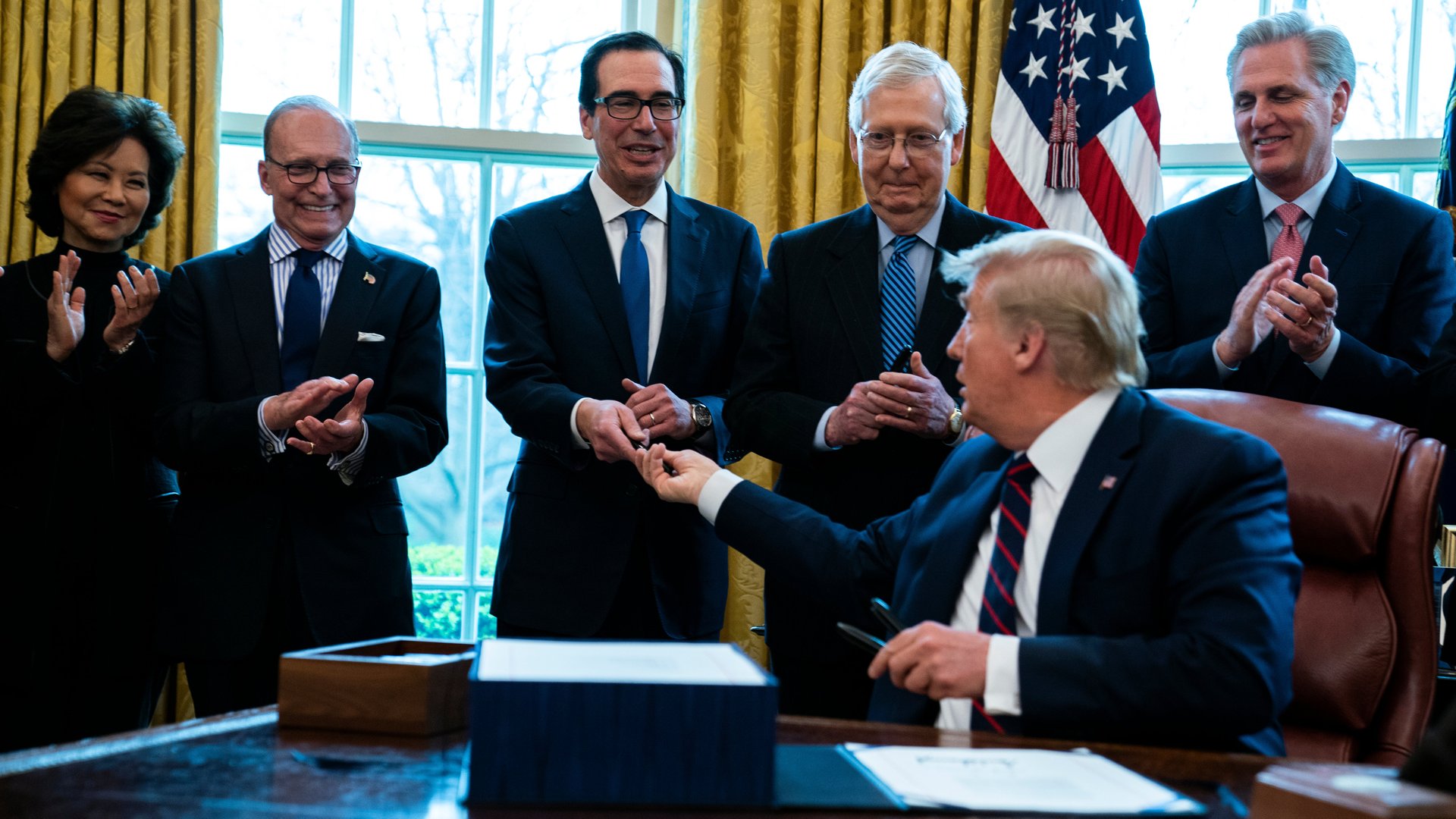Trump signed the second Covid relief package
A second wave of stimulus is on its way into the US economy. On Dec. 21, Congress passed a $900 billion Covid-19 relief bill that included direct payments for citizens, another round of loans for businesses and airlines, and extended unemployment benefits and eviction moratoriums. After some last-minute drama, US president Donald Trump signed the bill into law on Dec. 27.


A second wave of stimulus is on its way into the US economy. On Dec. 21, Congress passed a $900 billion Covid-19 relief bill that included direct payments for citizens, another round of loans for businesses and airlines, and extended unemployment benefits and eviction moratoriums. After some last-minute drama, US president Donald Trump signed the bill into law on Dec. 27.
Did Trump sign the second stimulus?
Yes, although he kept the US in suspense right up until the last moment. The president initially threatened to derail the bill, saying that the direct payments to citizens weren’t big enough (and expressing displeasure with several unrelated budget provisions that his own administration requested).
Ultimately, Trump caved and signed the bill—just in time to avoid a government shutdown, but too late to keep federal unemployment benefits from lapsing. As a result, roughly 12 million unemployed Americans won’t get a $300 check from the federal government this week, and the 11 weeks of unemployment benefits included in the relief bill may be cut to 10.
How much money will we get?
Under the relief bill that just passed, eligible US adults will get $600 checks, plus another $600 for each child dependent. But on Dec. 28, the House voted 275-134 to increase individual relief checks to $2,000, the same number Trump threw out when disparaging the bill last week.
The bill now goes to the Republican-controlled Senate, where it’s unclear whether Senate majority leader Mitch McConnell will bring it to a vote, or where that vote might land. Trump said earlier this week that he had secured a promise from McConnell to at least consider boosting payments, but the GOP has long opposed opposed doling out more money.
When will checks go out?
It’s unclear whether the Senate vote pauses any distribution of $600 payments. Back on Dec. 21, Treasury secretary Steven Mnuchin said the money could hit bank accounts as soon as this week.
The speediest payments will be made to Americans who have set up a direct deposit account with the IRS. For those who don’t have a bank account on file with tax agency, the Treasury Department will mail a check or prepaid debit card. The agency can deliver between 5 million and 7 million checks per week, and will start with the lowest-income earners.
Who is eligible?
US adults earning $75,000 or less are eligible for the full $600 check. For married couples who file their taxes jointly, the household income cap is $150,000, and for those who file taxes as a head of household the cap is $112,500. For every $100 in earnings over that threshold, the federal government docks $5 from the check.
This story has been updated to reflect the Dec. 29 House vote.